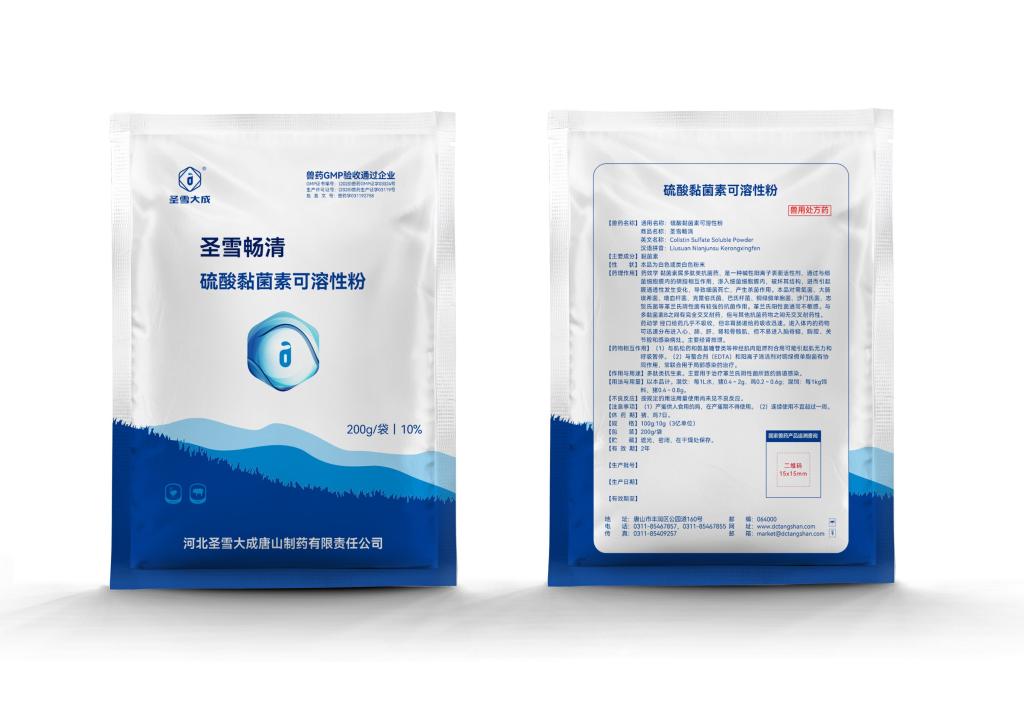Tel:+8618231198596

News
 CONTACT
CONTACT
 CONTACT
CONTACT
- Linkman:Linda Yao
- Tel: +8618231198596
- Email:linda.yao@dcpharma.cn
- Linkman:CHARLES.WANG
- Department:Overseas
- Tel: 0086 0311-85537378 0086 0311-85539701
News
Current Position:
Home >
News
>Colistin Sulfate Soluble Powder in Animal Use: Unpacking Potential Impacts.
Colistin Sulfate Soluble Powder in Animal Use: Unpacking Potential Impacts.
TIME:2023-12-29
I. Introduction: Colistin in Veterinary Medicine
Historical Context
Colistin, initially overshadowed by newer antibiotics, has experienced a resurgence in veterinary medicine. Its effectiveness against Gram-negative bacteria and affordability have made it a staple in the agricultural sector, raising questions about its potential impacts on animal health and the environment.
The Dual Role of Colistin
While colistin serves as a crucial tool in preventing and treating bacterial infections in animals, its extensive use in agriculture has prompted concerns about the development and spread of antibiotic-resistant strains, posing risks to both animal and human health.
II. Mechanisms of Colistin Administration in Animals
Inclusion in Feed and Water
Colistin sulfate soluble powder is commonly administered to animals through inclusion in feed or water. This mass medication approach is employed for prophylaxis, growth promotion, and the treatment of bacterial infections in livestock.
Individualized Treatments
In some cases, individualized treatments involve direct administration of colistin to sick animals. This approach allows for targeted therapy but requires accurate dosing to avoid the risk of under- or over-medication.
III. Antibiotic Resistance in Animal Agriculture: A Growing Concern
Selection Pressure and Resistance Development
The extensive use of colistin in animal agriculture creates significant selection pressure on bacterial populations. This pressure drives the development of resistance mechanisms, jeopardizing the effectiveness of this last-resort antibiotic.
Transmission of Resistance Genes
The transmission of resistance genes from animals to humans, either through direct contact or the food chain, is a major concern. Resistant bacteria in animals may serve as reservoirs for resistance genes that can be transferred to human pathogens, compromising treatment options in clinical settings.
IV. Impact on Animal Health: Balancing Benefits and Risks
Benefits of Colistin Use in Animals
Colistin plays a vital role in maintaining animal health and welfare by preventing and treating bacterial infections. Its inclusion in feed for growth promotion has been a common practice in the livestock industry, contributing to improved productivity.
Risks to Animal Health
Despite its benefits, the potential risks to animal health cannot be overlooked. Prolonged and indiscriminate use of colistin may lead to dysbiosis in the gut microbiota, affecting the overall health and immune response of animals.
V. Zoonotic Concerns: Connecting Animal and Human Health
Transmission of Resistant Bacteria
The interconnectedness of animal and human health becomes evident in the transmission of resistant bacteria from animals to humans. Zoonotic pathogens carrying resistance genes pose a direct threat to individuals working with animals, as well as to consumers of animal products.
Monitoring Zoonotic Pathogens
Surveillance and monitoring of zoonotic pathogens, especially those carrying colistin resistance, are crucial to understanding the scope of the problem and implementing strategies to prevent the transmission of resistant strains between animals and humans.
VI. Global Regulations and Guidelines: Addressing Colistin Use in Animals
International Efforts to Restrict Use
Recognizing the urgency of addressing antibiotic resistance, international organizations and regulatory bodies have implemented guidelines and restrictions on the use of colistin in animal agriculture. These measures aim to curb the development and spread of resistant strains.
Challenges in Implementation
Despite regulatory efforts, challenges in the effective implementation of guidelines persist. Varied regulatory landscapes, economic considerations, and the need for alternative strategies contribute to the complexity of restricting colistin use in animals.
VII. Alternatives and Strategies for Responsible Antibiotic Use in Agriculture
Exploring Alternatives to Colistin
Efforts are underway to explore alternatives to colistin in animal agriculture. This includes the development of new antibiotics, vaccines, and probiotics that can serve as effective tools without exacerbating the issue of antibiotic resistance.
Implementing Antibiotic Stewardship Programs
Antibiotic stewardship programs in animal agriculture focus on promoting responsible antibiotic use. These programs emphasize targeted treatments, proper dosing, and the use of alternative strategies to minimize the impact on animal health while reducing the risk of resistance.
VIII. Future Directions: A Holistic Approach to Animal Health and Public Health
Research into Antibiotic Alternatives
Ongoing research into antibiotic alternatives and strategies for preventing and treating bacterial infections in animals is essential. Novel approaches, such as phage therapy and immune modulation, hold promise for the future of animal health without relying extensively on last-resort antibiotics like colistin.
One Health Approach
Adopting a One Health approach, which recognizes the interconnectedness of human, animal, and environmental health, is crucial. Collaborative efforts among veterinarians, healthcare professionals, researchers, and policymakers are needed to address the complex challenges posed by antibiotic use in animal agriculture.
IX. Conclusion: Navigating the Crossroads of Colistin Use in Animal Agriculture
Colistin sulfate soluble powder's extensive use in animal agriculture demands a careful examination of its impacts on animal health, antibiotic resistance, and public health. While it remains a vital tool for preventing and treating bacterial infections in animals, the associated risks necessitate a holistic and responsible approach. Future directions should prioritize the development of alternatives, the implementation of antibiotic stewardship programs, and a global commitment to the One Health approach. Navigating the crossroads of colistin use in animal agriculture requires a concerted effort to ensure the well-being of animals, preserve antibiotic effectiveness, and safeguard human health.
- Tel:+8618231198596
- Whatsapp:18231198596
- Chat With Skype







